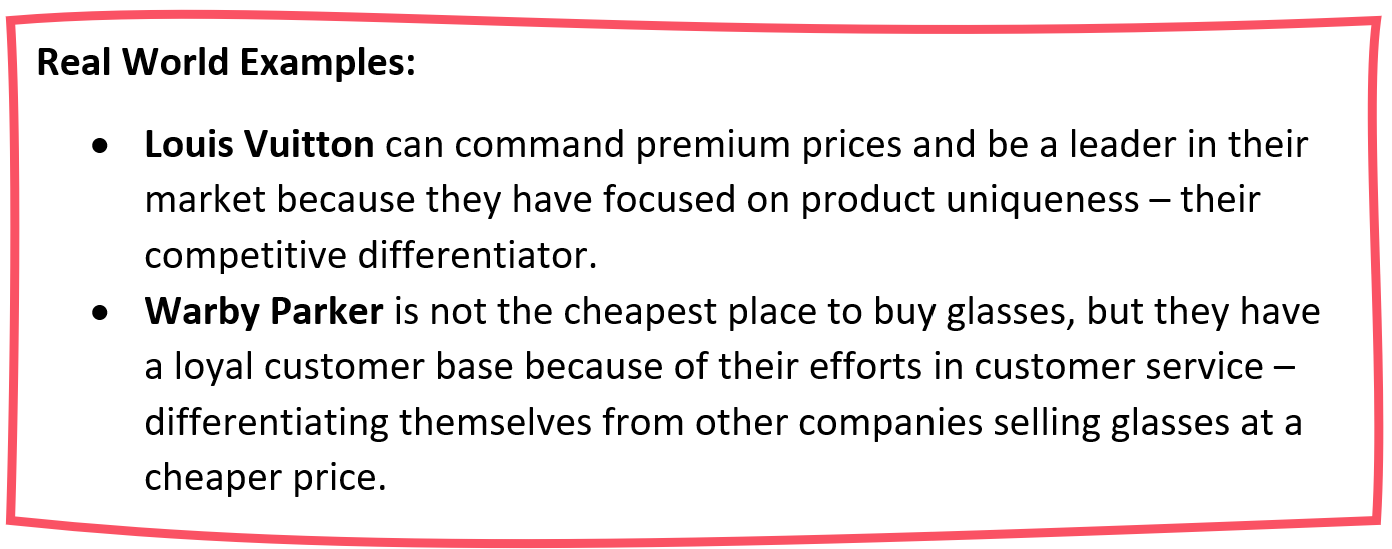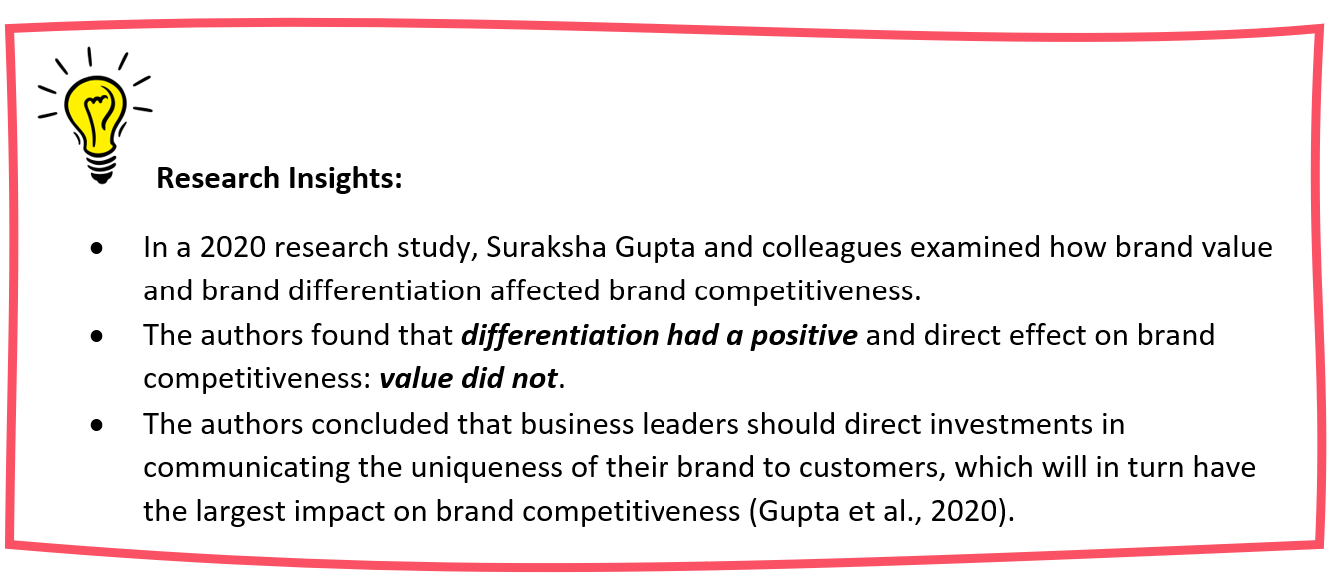How to Stand Out in a Crowd: Competitively Differentiate Yourself
Remember the fall of the Goliath, Kodak? Kodak was the leader in the photo industry until they refused to adapt their business model. The emerging technologies caused Kodak to lose their position in the market. Customers no longer viewed Kodak as offering a unique product and thus took their business elsewhere.
Businesses who want to thrive and adapt are desperate to understand their position in the market. This information is key in times of high competition, but most do not know where to begin. Not only that, but many companies also think they know their customers. According to Harvard Business Review Analytic Services (HBR-AS), 72% of companies believe they know what it is like to be their customer. Customers aren’t so sure - only 35% of customers felt businesses actually understood what they wanted and needed (HBR-AS, 2021).
Developing and maintaining your company’s unique offerings compared to the competition requires strategic thought and truly knowing your customers.
What is Competitive Differentiation? Your “Unique”
The founder of PATH, Monica McKay, defines competitive differentiation as an “intentional and strategic way that a company can set itself apart.” Businesses must actively research their competitive differentiation, and most do not know where to begin. There are two aspects to differentiating yourself from your competition:
Using research to find and develop strategic and unique offerings.
Effectively communicating your unique offerings to customers.
A strong competitive differentiation analysis takes the broad view of your business. Unique products or services are the most basic ways to differentiate your business, but it does not stop there! A company can tailor itself to a niche market or develop a unique image, such as a focus on inclusivity, to stand out in the crowd.
Why Should Business Leaders Care? Validating Your “Unique”
It is common for businesses to develop an internal, perhaps myopic, view of themselves as unique. However, this typically differs significantly from the customer perspective as customers struggle to determine what makes a business unique. Competitive differentiation analysis tests this hypothesis in the environment where it matters – amongst the customers.
For example, in the trucking industry you may differentiate yourself on your qualified technicians. Is this actually something unique about your company? If not, then you are missing an opportunity to build your customer base by standing out in the crowd. Your business becomes just another option for customers without a clear reason why they should choose you over others. Consider Tesla’s differentiation strategy. It is likely that when you hear the name Tesla you immediately think of innovation and green technology synergized with a luxury experience. This is because Tesla has put in the effort to communicate this message and help the public understand what makes Tesla unique.
“Over the long run, a company’s strategic differentiation and execution matter more to its performance – our research suggests at least four times as much – than the business it happens to be in.”
At PATH we use data to develop your company’s differentiation strategy so that when customers think about your company, they immediately see how you stand out. This drives revenue growth by increasing your customer base and building customer loyalty.
How PATH Leads You to YOUR Competitive Differentiation
Businesses are struggling to hear the voice of their customers despite the availability of customer data. At PATH we bring a unique perspective to competitive differentiation analyses. We stand for People Are The How (PATH). We don’t only use the information that’s currently out there and available. That data alone is not enough to drive a competitive differentiation analysis. Our analysis stands head and shoulders above the rest because we connect with customers, former customers, prospects, partners, and internal team members to hear their unique perspectives. We conduct one-to-one research and use our advanced understanding of data to give you powerful customer insights.
As we mentioned before, a big part of the problem is that businesses think they understand their customers. Some of this false sense of security for business is because customer data is extremely easy to access. However, understanding what the data means, gleaning the insights necessary to make business decisions, is definitively not easy. What most businesses fail to see is that data lacks the human element – emotion. Emotion drives consumer behavior, so if you want to understand how to get a person to choose your service over another’s, you need to understand the person – not just their data.
“Our custom research approach takes what everyone knows about industry trends and customizes them for your business - it adds the credibility and authenticity to insights businesses need to confidently deliver their “unique” to the market.”
PATH helps businesses find their competitive differentiation by bringing their customers back into the research process. We talk to current, former, and potential customers to see how they view your business and your competitors. We conduct in-person and telephonic interviews, telephonic and online surveys, and focus groups. This combination of quantitative and qualitative research and analyses allows us to provide meaningful insights to businesses with credibility and authenticity.
In a time when customer data is extremely prevalent and easy to access, talking to the customer, which is generally more expensive, has been faded out of the research process. “[Companies] say, ‘We have to do this research under this budget.’ They don’t say, ‘You have to do great research, how much will it cost?’” (Rishad Tobaccowala author and senior advisor to the advertising firm Publicis Groupe, in HBR-AS, 2021). At PATH we believe People Are The How - We determine a business’ competitive differentiation by talking to people.
Conclusion
It is common for businesses to develop an internal view of themselves as unique. However, this is different than the customers’ perspectives as customers struggle to determine what makes a business unique. HBR-AS found that 72% of companies they surveyed believe they know what it is like to be their customer. However, only 35% of customers thought businesses knew them well (HBR-AS, 2021). At PATH our competitive differentiation analyses work to close this gap by using a unique combination of quantitative and qualitative research.
References:
Gupta, S., Gallear, D., Rudd, J., & Foroudi, P. (2020). The impact of brand value on brand competitiveness. Journal of Business Research, 112, 210-222.
Harvard Business Review Analytic Services. (2021). Emphasizing Empathy as a Cornerstone of the Customer Experience. Harvard Business School Publishing.
Zook, C., & Allen, J. (2011, November). The great repeatable business model. Harvard Business Review. https://hbr.org/2011/11/the-great-repeatable-business-model




